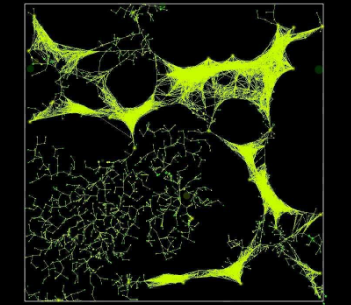PERHAPS ONE OF STRANGER BLOG ENTRIES ABOUT HOUSE CLEANING EVER
If you are among the 100’s of thousands of people who breathlessly follow this blog you have no doubt been waiting for the next installment regarding air cleaners and how they can fit in with keeping your home clean - in concert with having Accent Maid Service clean your house, of course. I should point out that I do not know for a fact that 100’s of thousands of people breathlessly follow this blog. But I can hope.
MORE INFORMATION SOON ABOUT AIR CLEANERS – BUT NOT THIS TIME
Anyway, the next installment regarding air cleaners will be coming soon. I am doing a quick review to make sure that something new and different has not hit the market. It doesn’t appear that it has. So you might want to check out the earlier blog entries that have to do with air cleaners. They are not only informative but also works of great literature. If Shakespeare had had air cleaners to write about…
Be that as it may, the information in the earlier air cleaner blogs about keeping your air clean and therefore keeping your home cleaner concerns how much skin you shed (a crazy amount) and a rascally little critter that lives with all of us – the dust mite (in crazy large numbers.) If the logic of shed skin and dust mites being in a maid service blog doesn’t seem like an immediate fit, you probably should go back and check out those cleaning blogs.
A FEW PARAGRAPHS THAT MIGHT CONFUSE YOU IN A CLEANING BLOG BUT…
This blog entry addresses another life form that you have in your home but about which you might not have heard: the slime mold. And it addresses how the dust mite and slime mold might unintentionally collude to make your house less clean.
The slime mold is actually a fascinating life form. I don’t think the biologists have reached agreement as to whether it is animal, plant, fungus or what, but as a practical matter in keeping your home clean, it doesn’t matter. And no, I am not going to suggest ways to exclude the slime mold from your home. That would not be possible. Rest assured that slime mold spores along with all kinds of other microscopic spores are swirling around us all the time. Well, actually, using air cleaners will help but, once again, that is not the point I trying to make.
Slime molds are everywhere; various types are all over your garden and lawn, for example. And in the woods where you like to take walks. Ever noticed a stick with yellow stuff all over it? Or goopy-goo stuff growing in your garden mulch?
Slime mold.
As an aside: what is really interesting is that the single-cell slime mold lives a solitary life most of the time but should hard times hit (lack of moisture, most likely) the various individual slime molds call to each other chemically and give up their occupation of cleaning the world of debris, crawl together, and form a relatively big chunk of slime-mold-itud-iness which ultimately sends up a tall stalk to cast spores into the air. Amazing, actually. You might want to google about them as soon as you finish signing up for a home or office cleaning with Accent Maid Service.
PARTNERS IN GRIME
And now, finally, to the point: slime molds have a way of getting into the drainage system of your air conditioner. If they do so and ultimately plug up the drainage pipes, the water that collects in your air conditioner has no way to escape - which the system was designed to allow. Then, the air conditioner cannot de-humidify the air properly. If the air is not de-humidified pretty consistently below 50%, dust mites can thrive and reproduce in great numbers. Therefore: air conditioner drainage blocked by slime mold leads to high humidity which leads to active populations of dust mites which leads to more dust in the air and making it harder to keep your home clean; and maybe leads to allergies and asthma.
In the case of central air conditioners located in or above living areas (e.g. in closets or attics,) you can also have water damage result from the drainage backing up.
So – what to check and what to do. In my house it is relatively simple. I go down into the basement when the HVAC systems are running (two furnaces) and make sure the pipes that lead from them to the sump pump are dripping. If not, I put a funnel into each of the two short pipes located at the top of the pipes (teeny stand-pipes, as it were,) where the drain pipes leave their respective furnaces and I pour a little bleach into them. This cleans out the slime mold. Then I watch for the bleach to drip through into the sump. If there is no sump activity I might add water to the sump to be pumped out so that the bleach does not sit around in and on the pump and its wiring for too long, incidentally.
You can also have a humidity problem if the air conditioner was not sized properly for your home and reaches the thermostat temperature and shuts off before being able to adequately de-humidity your home, by the way.
Anyway, what I am suggesting is that you figure out how to check if your air conditioner water (HVAC condensate) is draining properly. In some HVAC set-ups, a small pump takes the water and pumps it outside or elsewhere. If you can’t figure out how your system works, maybe calling an HVAC person is in order or at least ask them about it during your next service visit. If there is a drainage problem or you worry that there might be one in the future, you might need to get them to add a way to introduce bleach or other cleaner into the system. In my case, when I had two new furnaces installed, and the new drainage pipes were being attached, I requested little stand-pipe openings be included so that I could clean out the pipes as needed. And it has been necessary numerous times.
What surprised me at the time is that the furnace installer thought it was a nifty idea but had not been planning on doing it before my suggestion. That puzzled me then and continues to puzzle me now. I would have thought including an easy way to clean slime mold from the system would be a standard practice. I guess it is not, so who knows what your system might look like.
There are also several other ways to potentially clean your condensate pipe, including a special attachment for a wet-dry vacuum to suck it out, using a water hose, etc., depending on your circumstances. Many of these are shown on Youtube. I typed in “cleaning hvac drain” on Youtube and found a bunch of them. Which of these videos might be useful depends on your air conditioner’s set-up. They also sell HVAC cleaners to use on or in air conditioners. These should be available in any hardware store. The question is how to introduce them into your system. Once again this might require some poking around on your part or getting an expert to look at your set-up.
So once again, assure yourself that 1) your condensate drainage is working in order 2) to keep the humidity low in order to 3) make the dust mites’ lives miserable and 4) thus have a cleaner, healthier home. In addition, de-humidifying the air adequately will also lead to feeling more comfortable at any given temperature.
Now go read my earlier blogs about air cleaners. There is truly some good information there. If you would like more information about our services, contact us today!
But first, the star of the show:


